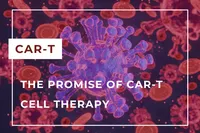Home › Biological sample › Cancer › Leukemia
Leukemia biological samples
For research applications
The development of drugs and diagnostic tests for the treatment and detection of leukemia requires conducting studies on biological samples obtained from patients with leukemia.
A brief overview of the various types of leukemia and how the services offered by Labtoo contribute to accelerating research and development projects in the pharmaceutical industry.


Are you looking for biological samples from leukemia patients?
What is leukemia?
Leukemias represent a group of cancers affecting blood cells and bone marrow. They result from genetic mutations disrupting the normal growth cycle of hematopoietic stem cells, responsible for the formation of blood cells. Patients often present symptoms such as persistent fatigue, unintentional weight loss, recurrent fevers, increased bruising propensity, and heightened susceptibility to infections.
These cancers are generally classified into acute leukemias, characterized by rapid growth and accumulation of immature blasts in the bone marrow, and chronic leukemias, which progress more slowly with an accumulation of abnormal mature cells. Within these categories, two main subgroups are distinguished: myeloid and lymphoid leukemias.
Myeloid leukemias
Result from mutations in myeloid stem cells, responsible for the production of mature blood cells such as red blood cells, white blood cells (except lymphocytes), and platelets.
These tumors proliferate in the bone marrow and may also invade peripheral blood, thus manifesting as acute myeloid leukemia (AML) and chronic myeloid leukemia (CML).
Lymphoid leukemias
Arise from the degeneration of cells from the immune system, B lymphocytes.
These tumors multiply in the bone marrow, lymph nodes, and other lymphoid organs, presenting as acute lymphoblastic leukemia (ALL) and chronic lymphocytic leukemia (CLL).
| Type of Leukemia | Cell of Origin | Characteristics | Affected Population Type |
|---|---|---|---|
| Acute Myeloid Leukemia (AML) | Myeloid stem cells | Rapid growth, accumulation of immature blasts | Mainly adults |
| Acute Lymphoblastic Leukemia (ALL) | Lymphoblasts | Rapid growth | Mainly children |
| Chronic Myeloid Leukemia (CML) | Myeloid stem cells | Slow progression, accumulation of abnormal mature cells | Middle-aged to elderly adults |
| Chronic Lymphocytic Leukemia (CLL) | B lymphocytes | Slow progression, multiplication in various lymphoid areas | Adults, mainly elderly |

Unlike many other cancers, leukemias are not "solid tumors" as they initially reside in the blood or lymphatic systems. Therefore, the tumor can migrate to other parts of the body at any time, and the concept of metastasis is not applicable to this type of cancer.
Explore Labtoo's Service for Your Biological Sample Research
Labtoo assists you in sourcing biological samples from leukemia patients. Our team manages the entire project of transferring biological materials from inception to sample delivery.
- Feasibility assessment of sample availability or clinical collection from referenced clinical centers
- Validation of regulatory aspects
- Establishment of a contractual framework
- Dispatch of desired samples under appropriate conditions
- Transfer of associated clinical data
- Additional analytical and experimental services
Types of available samples
Frozen tissues (OCT and FF)
The clinical site can freeze and keep the frozen leukemia samples (such as BMMC pellet) at -80°C or in liquid nitrogen for ulterior use.
FFPE Tissues
FFPE blocks of leukemia cells can be generated from cell pellets such as BMMC.
- Plasma or Serum from leukemia patients
- PBMC (Peripheral Blood Mononuclear Cells)
- Whole Blood
- Leukapheresis
- Urine
- Feces
- Other
Typical associated clinical data
-
- Age
- Gender
- Ethnicity
- TNM Classification
- Undergone Treatment
- Medical Imaging
- HIV/HBV/HCV status
- Mutations
- Other Data (upon request)

Labtoo identifies clinical sites that can prepare and transfer sample collections tailored to your specific project needs.
Contact our team to discuss your project.
Send your request to our team:
The stages and grades of leukemia
The classifications of leukemias differ from those of solid cancers, and the use of the term "stage" is less common in this context. This difference stems from the inherent nature of leukemias, which, unlike localized solid cancers, often affect the bone marrow and blood throughout the body.
The classification of leukemias relies on morphological, cytogenetic, and molecular criteria specific to each type of leukemia, as well as specific treatment phases. In summary, leukemias are classified functionally rather than in numbered stages to better reflect the dynamics and variability of these blood disorders.
Examples of staging for chronic myeloid leukemia (CML)
Chronic phase
Symptoms are generally minimal, with a limited presence of abnormal white blood cells in the bone marrow and blood, accompanied by a low blast count, usually less than 10%.
Accelerated phase
Significant increase in blasts in the blood and bone marrow, with abnormal white blood cell count between 15 and 30%. Non-specific symptoms such as anemia, splenomegaly, and organ infiltration appear.
Blastic phase
Characterized by massive invasion of the bone marrow by abnormal white blood cells, with blast counts greater than or equal to 30%. Symptoms worsen, including bleeding, infections, and increased fever.
Examples of staging for chronic lymphocytic leukemia (Rai classification)
Stage 0
Absolute lymphocytosis greater than 10,000/mcL in the blood, accompanied by ≥ 30% lymphocytes in the bone marrow.
Stage I
Encompasses Stage 0 criteria and is characterized by the presence of lymphadenopathy in addition to lymphocytosis.
Stage II
In addition to Stage 0 criteria, Stage 2 manifests with hepatomegaly or splenomegaly.
Stage III
Retains Stage 0 criteria, with the addition of anemia defined by hemoglobin less than 11 g/dL (< 110 g/L).
Stage IV
Finally, Stage 4, while maintaining Stage 0 criteria, is characterized by thrombocytopenia, with platelets less than 100,000/mcL (< 100 × 10^9/L).
Examples of staging for acute lymphoblastic leukemia (ALL)
Untreated
Features of untreated ALL include low red blood cells, white blood cells, and platelets in the blood.
Signs and symptoms of ALL are also present.
Remission
Less than 5% of cells in the bone marrow are leukemic cells. There are no general signs of ALL.
In partial remission, less than 25% of cells in the bone marrow are leukemic cells.
Relapse
ALL is in relapse when it reappears after being treated and reaching remission.
Leukemia is in relapse when more than 25% of cells in the bone marrow are leukemic cells.
Refractory
Leukemia has not responded to treatment.
Examples of staging for acute myeloid leukemia (AML)
Untreated
Features of untreated AML include a low level of normal blood cells (red blood cells, white blood cells, platelets).
At least 20% of cells in the bone marrow are blast cells.
Signs and symptoms of AML are usually observed.
Remission
Complete remission is characterized by the restoration of blood cell numbers, with a neutrophil count greater than 1 x 10^9/L and a platelet count greater than 100 x 10^9/L.
Less than 5% of cells in the bone marrow are blast cells.
No general signs or symptoms of AML.
Relapse
AML is in relapse when it reappears after being treated and reaching remission.
Leukemia is in relapse when more than 25% of cells in the bone marrow are leukemic cells.
Refractory
Leukemia has not responded to treatment.

Rare forms of leukemia
Less frequent variants of leukemia are documented, among which are:
-
Prolymphocytic T Leukemia (PTL)
This is a rare variant of chronic lymphocytic leukemia characterized by the presence of abnormal mature T lymphocytes.
-
Mast Cell Leukemia (MCL)
Mast cell leukemia is an extremely rare form of leukemia, characterized by abnormal proliferation of mast cells, cells involved in the immune response.
-
Acute Monocytic Leukemia (AML)
This variant of acute myeloid leukemia is distinguished by an abnormal accumulation of monocytes, a specific type of white blood cells.
-
Acute Promyelocytic Leukemia (APL)
It is a subtype of acute myeloid leukemia characterized by the proliferation of immature cells resulting from a blockage in the maturation of polymorphonuclear cells at the promyelocyte stage.
Leukemia treatments and advances
The treatment of leukemias is highly individualized, depending on the type of leukemia, its stage, and the patient's physical condition. The main therapeutic modalities include:
-
Surgery: Rarely used for leukemias, surgery may be considered for the extraction of a lymphocyte-producing organ. However, stem cell transplantation is often preferred after chemotherapy or radiotherapy.
-
Radiotherapy: Generally not used as a primary treatment due to its diffuse involvement in the bone marrow. Radiotherapy may be applied in specific cases, particularly for rare forms or complications. It can also be used in total body irradiation before a bone marrow transplant.
-
Chemotherapy: The primary method for many types of leukemias, especially acute leukemias. Induction chemotherapy eliminates abnormal cells from the bone marrow and blood, followed by consolidation chemotherapy aimed at preventing relapse.
-
Immunotherapy: An emerging method, particularly used in lymphoblastic leukemias. Monoclonal therapy specifically targets leukemia cells, while CAR-T therapy genetically modifies T lymphocytes to target and destroy leukemia cells.
-
Targeted Therapies: Preferred in leukemia treatment, these drugs target specific abnormalities present in leukemia cells by aiming at particular proteins.




